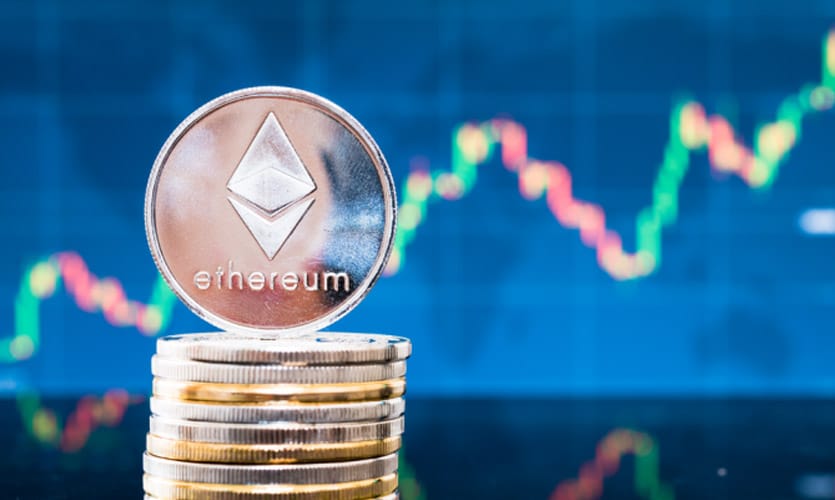Ethereum, the second-biggest cryptocurrency, is getting a revamp predicted to go live on August 5. The technical adjustment, code-named London, will significantly alter the way transactions are processed. This will reduce the supply of new ether tokens hitting the market each day by a third, and sharply boost its price.
The Ethereum Improvement Protocol 1559, or EIP-1559, will be included in a network upgrade called the “London hard fork”. Analysts reveal that the software upgrade is similar to a bitcoin “halving” event in which periodic adjustments reduce the supply of bitcoin. Each halving helps propel bitcoin’s price to higher records.
While bitcoin continues to dominate markets in the digital ecosystem, ethereum has emerged as the leading financial infrastructure, settling over $12 billion of daily transactions, according to a Grayscale report released in February this year.
On August 2, with the looming upgrade, ethereum was trading 1.6 percent higher at almost $2,600 at press time, having rallied 43 percent over an unbroken string of 12 straight daily price gains, as per Coinbase data.
Andrew Keys, managing partner at DARMA Capital estimates that the expected software adjustment, coupled with another upgrade in the first quarter of 2022, should “easily quintuple the price of ether” by next year.
However, ethereum’s $271 billion market cap is still nearly half of what it was in May when Ether hit its all-time high. Most cryptocurrencies have been sliding in recent months due to factors such as tightening government regulations.
How Does EIP-1559 Aim To Improve Transactions?
Cryptocurrency investments have often been associated with being risky and unpredictable in their market performance. However, the new ether upgrade aims to make transaction fees more predictable and therefore, make the network easier to use.
Previously, the network used an auction system where users bid against each other to have their transactions processed and verified by other users called miners. This fee was called a “gas fee” in ether, used for miners to process their transactions. The system leads to fees soaring when the network’s busy. The blind auction system is what drives the fees to be highly volatile and unpredictable. Matt Hougan, chief investment officer at Bitwise Asset Management said that the old system created two issues. “First, it introduces a major uncertainty around whether you’ll get your transaction processed in a timely fashion,” said Hougan. He added, “Second, people overpay because they don’t know the clearing price and they bid too much to make sure the transaction is processed.”
After the implementation of the EIP-1559, instead of submitting bids users will pay a “base fee”, which will be algorithmically determined by the network depending on traffic. The idea is that the network’s base fee will always be clear to users as they go into transactions, and won’t fluctuate often.
They will also be able to pay a miner an optional “tip” to validate transactions and by “burning” a small amount of those tokens. Miners do not receive the base fee as they could artificially congest the network to keep the fee high. It’s destroyed instead.
In token burning, miners typically send the tokens to specialised addresses that have unobtainable private keys. The tokens cannot be used without access to a private key thus, putting them outside the circulating supply. This reduces the number of tokens in circulation, making them rarer and more valuable.
User base fees now account for somewhere between 25 to 75 percent of the gas fees paid to miners, Tim Beiko, the coordinator for the core ethereum developers, said in an interview. Once these coins are burned, ether’s current supply increases of roughly 4 percent a year will be reduced.
The EIP-1559 is a small change compared to Ethereum 2.0 where the network’s entire infrastructure is aimed to become “more scalable, more secure, and more sustainable”. Developers hope the new upgrade will be complete by early 2022.
Ethereum 2.0 will see the network change from a “proof-of-work” (PoW) system to a “proof-of-stake” (PoS) system. Under PoW, miners use vast amounts of computing power to verify transactions. But under PoS, users will put forward ether to gain the right to verify transactions and earn coins.
However, critics have warned that the change could make ethereum’s blockchain less decentralised and open to abuse.
The Environmental Angle
Tesla CEO Elon Musk announced this May that the carmaker would no longer accept bitcoin as payment, citing the rapid use of fossil fuels for its mining and transactions.
Bitcoin and ethereum have faced increasing criticism over the increasing environmental impact of the so-called mining operations that keep their blockchains running. Reportedly, according to Digiconomist’s Ethereum Energy Consumption Index, these two networks together consume more energy than the entire country of Thailand (population: 90 million).
In early 2022, in an event that has been termed “the Merge”, ethereum creator Vitalik Buterin confirmed a cut of more than 99 percent in the network’s energy consumption and positioned the blockchain launched in 2015, as the big “green” choice for crypto users and developers.
Ethereum’s potential applications, lower environmental impact and technical upgrades are likely to help the ether token continue to outperform bitcoin, said Pantera Capital CEO Dan Morehead.
Read more: Ethereum Grows Three Times As Fast As Bitcoin In The First Half Of 2021
Impact On Miners
The recent upgrade will create an initial revenue hit for miners supporting the network in the short term, however, eventually, they are set to profit from their growing ether value.
“If the ethereum ecosystem becomes stronger and larger, we will of course benefit from that, just like ordinary users,” said Slava Karpenko, chief technology officer at 2miners, an ether mining pool. Miners will still be able to earn coins by helping traders execute transactions such as arbitrage trades.
The users hold the power since they pay the fees and therefore, the miners have to get on board. The EIP-1559’s London upgrade contains a code that will deploy a “difficulty bomb” in December, which can make the coin impossible to mine without using a software upgrade.
The upgrade is happening just as ethereum celebrates six years since the software’s initial release. The new upgrade is also expected to increase transactions on the ethereum network and raise the use of ether, which will likely help bring a wave of institutional investors into the market.









